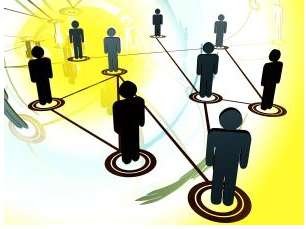 I want to get back to social applications and PLM topic. You can ask me why? Last week was the week Google Buzz was born. In my view Google did it, as usual, in a very disruptive way. I remember, last year or so, Google introduced Google Profile. Nobody clearly understood what is that. I did one for myself. Last week everybody finally discovered what is Google Profile about – it is about your social identity. Btw, if you haven’t had a chance to read my Google Buzz notes, please find it here.
I want to get back to social applications and PLM topic. You can ask me why? Last week was the week Google Buzz was born. In my view Google did it, as usual, in a very disruptive way. I remember, last year or so, Google introduced Google Profile. Nobody clearly understood what is that. I did one for myself. Last week everybody finally discovered what is Google Profile about – it is about your social identity. Btw, if you haven’t had a chance to read my Google Buzz notes, please find it here.
Google Buzz was a trigger, in my view, to start a discussion about what are fundamentals of social connection? What I like about social application is that all of them put people before processes. When I asked teenagers – why are you on Facebook? The answer was simple – because everybody is there. Interesting comparison was made – Facebook is the place to see and stay connected with friends and Twitter is the place to spy celebrities. This is an interesting observation. You are following people you consider as your social or professional connection. And existing social networks provide a clear answers – you can follow celebrities, friends, colleagues, brands- these are they way things become social.
Let’s get back to Product Lifecycle and Enterprises. The application of social tools in the enterprise is in the very early beginning. The most massive social attack on the enterprise is fast growing number of social platforms promising the creation of communities between users, customers, brands, etc. Chatter, 12sprints, BlueKiwi, PTC Social Product Development with Product Point… This is an incomplete list of all apps proposing creating of community of people like Facebook. Finally, we got the new one – “Facebook for files”. I got this definition from Chris at Vuuch in his post “Following A Friend Make No Sense”. So, “whom should we follow?” was the most important question for me to ask?
It is about people.
Files and other data were here before social systems came in. Somebody can put an assembly, file, word document. You never know somebody did something with that. If you will try to spy after all files, things can get crazy. But, if you are following people you’re working with, it can be more relevant. In the end, you are not working with millions. On average, you connected to couple dozens of people in the organization you work. So, stay connected with them, and you’ll get all you need.
It is about data you can get through your connections.
You work with people, so you can collaborate on data everybody owns. Design, bill of materials, changes, product definition, customer’s claims, etc. – all these collections of data can be available from the people are working with. So, stay online with your connections and you’ll have all up-to-date stuff. You’ll become a focal point for the data you own.
It is about openness and share.
If you are in the open social world – share what you have to say. If you’re in the organization – share what you need to work on. If you will do it, the most probably it will allow you to get connected to the right social focal points in your organization and extended enterprise.
What is my conclusion today? You cannot follow “data” or “files”, since data is not social. Files are not social. You can get connected to data by using your social connections. It doesn’t matter if this is an enterprise organization, your high school or college. The aim of social software is to bring “the relevant data” to you. So, in PLM – follow people you need to work within the organization. This will be your ultimate way to get the most relevant information you need. And this is, in my view, the purpose of social PLM (and other social apps)- to get your data by using your organization’s social network.
It will be interesting to know what do you think?
Best, Oleg













